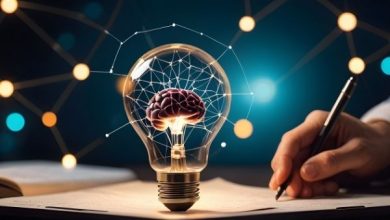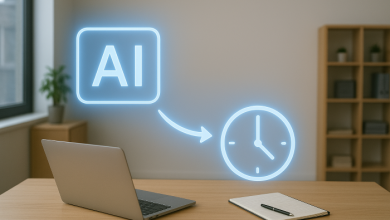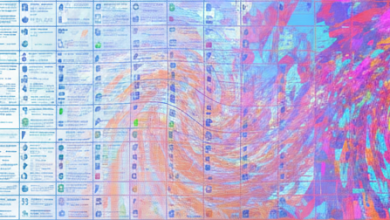
Have you ever asked yourself how some people create smooth videos with text, images, or even simple prompts in just a few clicks?
That is where the AI Video Generator steps in. These tools make it possible for anyone, from students to content creators, to turn ideas into videos without needing professional editing skills.
Let’s look closely at how this technology works, why it feels so easy to use, and the different parts that make it special.
What Are AI Video Generators?
AI video generators are platforms such as ImageMover, that use artificial intelligence to create videos from input like text, images, or audio. Instead of learning complex editing software, you can type your content or upload your media, and the system automatically arranges it into a polished video.
This works because the tool uses machine learning models trained on thousands of video patterns and editing styles. With that training, the AI can predict what looks natural and appealing to viewers.
In simple words, these platforms act like a personal video editor that understands your instructions and puts everything together quickly. They are becoming popular because they save time, simplify video production, and open creative opportunities for people who may not have any editing background.
Why They Are Easy To Use
The charm of these tools lies in their simplicity. You don’t need to learn transitions, effects, or sound syncing. Just give your input and let the AI arrange everything neatly. Some platforms even allow natural language instructions, so you can explain in plain words what type of video you want.
Key Benefits of Using Them
- Quick creation process compared to traditional editing
- Accessible for people with no technical skills
- Consistent output quality with little effort
- Wide range of styles and formats to pick from
- Saves time and boosts creativity
The Core Technology Behind AI Video Generators
The magic behind these platforms comes from a mix of artificial intelligence techniques. Each layer of technology plays its role in turning raw input into a final video that looks polished and natural.
To make it easier to understand, think of it as a group of systems working together like a team. Each one has a responsibility, and when they combine, the result is smooth video content.
Natural Language Processing (NLP)
When you type a script or simple instructions, the system uses NLP to understand the meaning. NLP allows the platform to figure out what kind of scenes, visuals, and pacing will match the words. This is why you can simply type a description and see it come to life as a video.
Computer Vision
If you upload images, the system uses computer vision to recognize shapes, colors, and context. This helps the AI place visuals in the right position, match them with background scenes, and ensure they look natural together.
Machine Learning Models
These models are trained on thousands of video samples. They learn patterns like how text usually appears on screen, how transitions flow, and how sound effects fit in. Because of this, the AI can recreate editing decisions similar to those of human editors.
Text-to-Speech and Audio Matching
Another special feature is voice generation. With text-to-speech technology, you can convert written content into clear spoken narration. Some platforms even allow natural tones, different accents, and pacing control. Alongside this, audio matching technology ensures background music fits the rhythm of the video.
How AI Creates Videos Step by Step
Let’s break the process into a few simple steps to see how everything comes together:
Step 1: Input Collection
The user provides text, images, or video clips. This input is the base from which the system starts building.
Step 2: Script Understanding
If text is provided, NLP analyzes the content. The system identifies key themes, breaks them into segments, and decides where each part should appear in the video.
Step 3: Visual Arrangement
Computer vision and machine learning work together here. Images or clips are placed in the timeline, transitions are selected, and the pacing is adjusted to match the script.
Step 4: Audio Generation
Text-to-speech or uploaded audio is added. The system aligns the narration with visuals, ensuring everything flows naturally.
Step 5: Final Polishing
The AI applies filters, adjusts colors, syncs sound, and ensures smooth transitions. After this, the video is ready for download or sharing.
Why People Enjoy Using These Tools
AI video generators are more than just technical platforms. They give people freedom to express their thoughts without being blocked by skill gaps. A student can turn a school project into a video presentation. A teacher can interactively explain lessons. Content creators can put out material faster without waiting for long editing processes.
Real-Life Uses
- Educational content made simple for classrooms
- Marketing videos for small businesses
- Quick tutorials and explainers
- Personal projects like greetings or story videos
- Creative social media content
The Role of Creativity and AI Together
AI video generators are not only about automation. They also encourage creativity. Since the heavy lifting of editing is done by the AI, people can focus more on ideas and storytelling. This means less time spent on cutting and merging clips and more energy directed toward content.
How AI Helps Creativity Flow
- Reduces editing workload so you focus on ideas
- Provides ready templates and styles for inspiration
- Suggests matching visuals and audio
- Allows quick testing of different concepts
Future Possibilities of AI Video Creation
The future looks bright for this technology. With continuous improvements in AI, videos will soon become even more realistic, interactive, and customizable. We may see options for creating videos in 3D, adding real-time voice translation, or even generating characters that interact with the audience.
What To Expect in the Coming Years
- Better personalization of content
- Support for multiple languages and accents
- Smarter editing tools with finer control
- Interactive videos where viewers choose directions
- Faster production speed with high-quality output
To Sum Up
AI video generators bring together advanced technology and simple usability in one platform. They remove the barriers of editing and make video creation possible for anyone who has an idea. With a blend of NLP, computer vision, machine learning, and text-to-speech, these tools convert raw input into finished videos in a way that feels natural and easy.
As the technology continues to grow, these tools will open even more creative possibilities. They allow people to focus on their stories and messages while the AI takes care of the technical part. From classrooms to social media to personal projects, AI video generators are proving that creating videos can be both simple and enjoyable.





